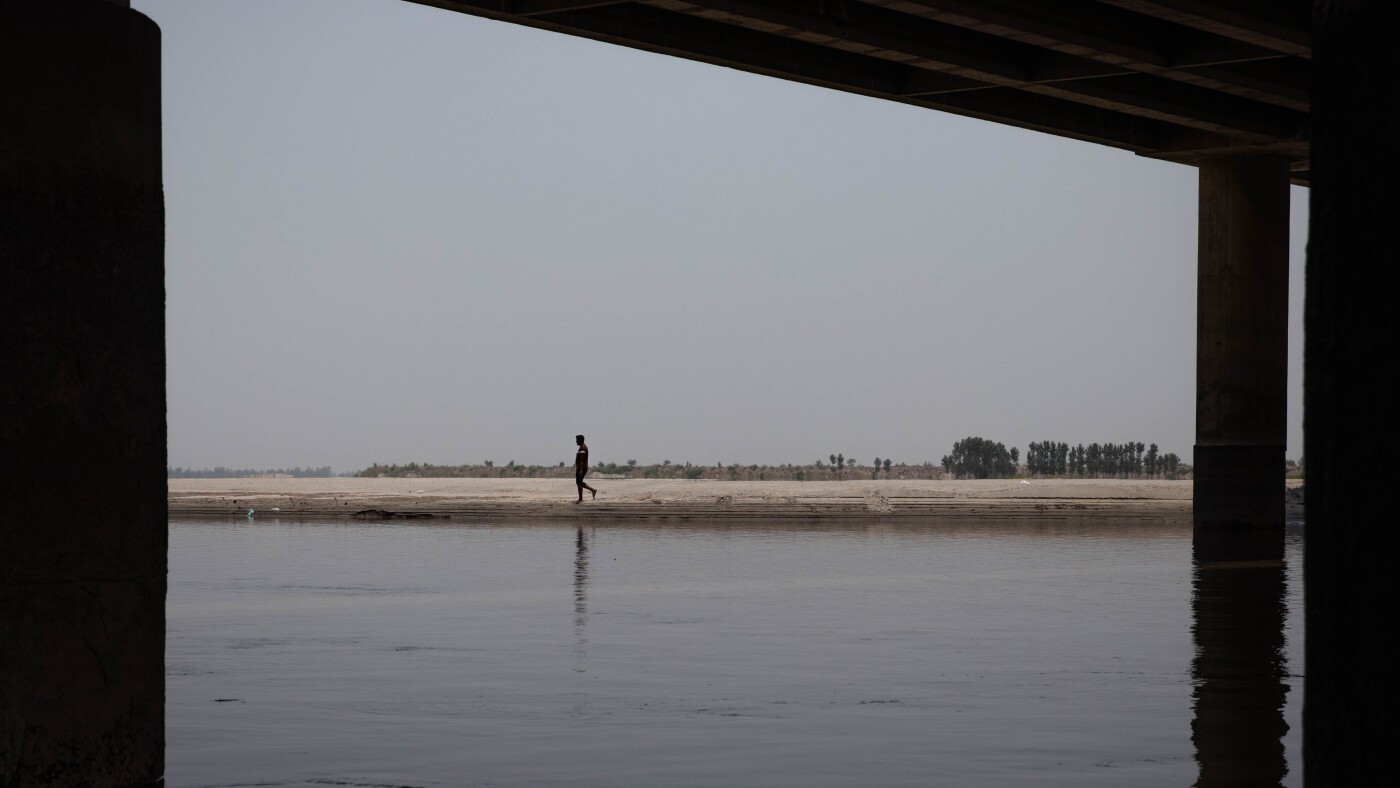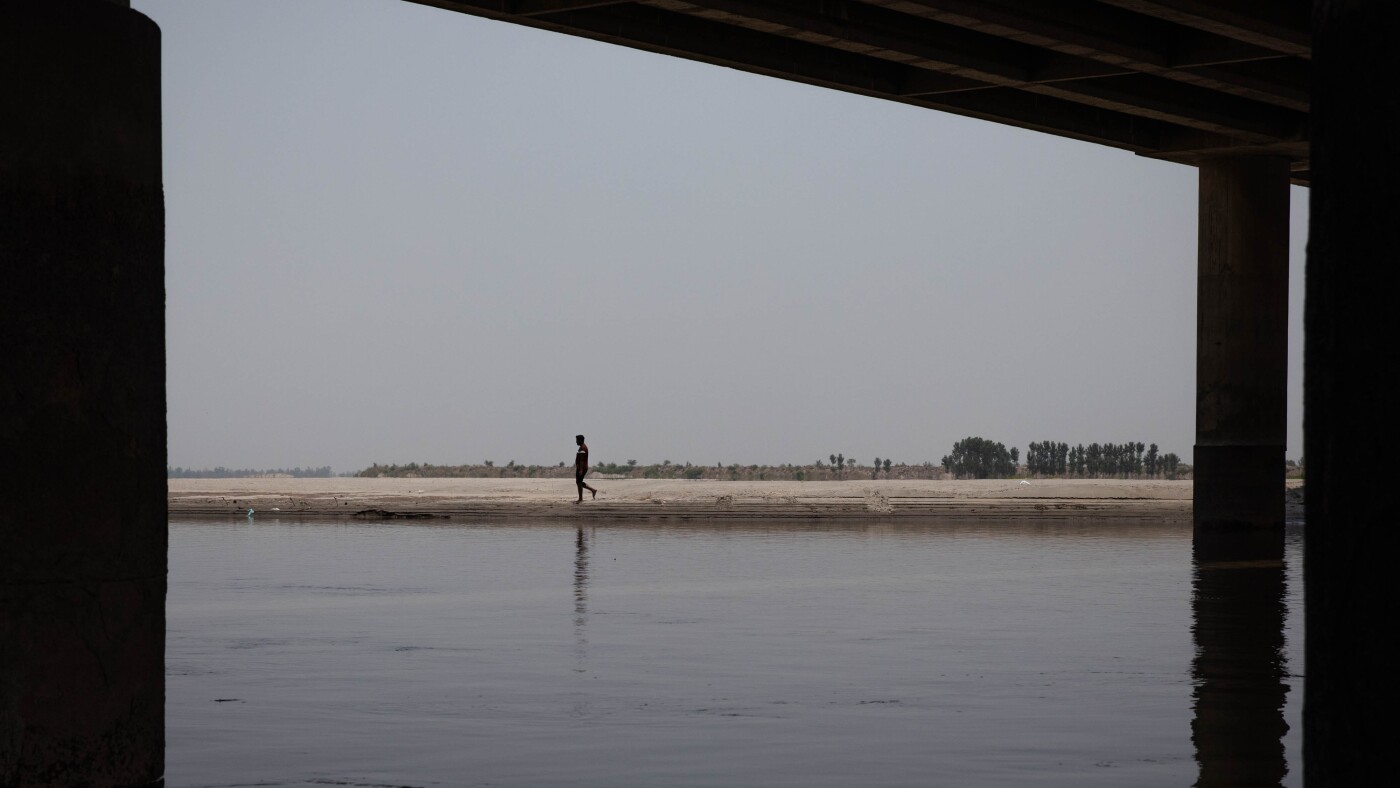The Indus River, a vital artery that sustains Pakistan’s agriculture, industry, and burgeoning population, is now under severe threat. As the country grapples with a rapidly growing population, inefficient water use, and the escalating impacts of climate change, its water crisis deepens. The Indus Waters Treaty (IWT), a six-decade-old agreement that has governed water sharing between India and Pakistan, is now under unprecedented strain, further exacerbating Pakistan’s vulnerabilities. The future of this treaty and the nation’s water security hangs in the balance.
The Indus Waters Treaty: A Fragile Agreement
The Indus Waters Treaty, signed in 1960 with the World Bank as a mediator, was a landmark achievement in transboundary water management. It divided the Indus River system, allocating the three eastern rivers (Ravi, Beas, and Sutlej) to India and the three western rivers (Indus, Jhelum, and Chenab) primarily to Pakistan. The treaty allowed India limited use of the western rivers for irrigation and power generation, subject to strict design and operational restrictions.
For over six decades, the IWT has been celebrated as a success story, surviving wars, political tensions, and diplomatic standoffs. It provided a framework for cooperation and dispute resolution, preventing water from becoming a direct trigger for conflict. However, recent developments have placed the treaty under unprecedented pressure. India’s increasing demand for water resources, coupled with accusations of violating the treaty’s spirit, has raised serious concerns in Pakistan.
A Looming Water Crisis
Pakistan’s water crisis is driven by multiple interconnected factors, each contributing to the nation’s rapidly deteriorating water security.
Population Growth and Water Demand
Pakistan’s population is growing at an alarming rate, placing immense pressure on already strained water resources. The demand for water for domestic use, agriculture, and industry is rising exponentially. With a population expected to reach 335 million by 2050, the country is rapidly approaching the threshold of absolute water scarcity, defined as having less than 1,000 cubic meters of water available per person per year. Currently, Pakistan has approximately 1,000 cubic meters per capita, but this figure is declining rapidly due to population growth and inefficient water use.
Inefficient Agriculture and Water Wastage
Agriculture is the largest consumer of water in Pakistan, accounting for over 90% of the country’s water usage. Inefficient irrigation techniques, such as flood irrigation, lead to significant water wastage. Subsidized electricity for agriculture further incentivizes over-extraction of groundwater, leading to aquifer depletion. The lack of modern irrigation technologies, such as drip irrigation and sprinkler systems, exacerbates the problem. Additionally, poor water management practices, including outdated canal systems and inadequate water distribution networks, result in significant water losses.
Climate Change and Its Impact on Water Availability
Climate change is exacerbating Pakistan’s water challenges. Changing precipitation patterns, including erratic monsoon seasons and reduced snowfall in the Himalayas, are impacting river flows. Glacial melt, a crucial source of water for the Indus River, is accelerating, posing a long-term threat to water availability. The melting of glaciers in the Himalayas and Karakoram ranges, which feed the Indus River, is expected to increase water flows in the short term but could lead to long-term water scarcity as glaciers shrink.
Urbanization and Industrialization
Rapid urbanization and industrial growth are increasing water demand in urban centers. Untreated industrial effluent pollutes water sources, further reducing the availability of clean water. The lack of proper wastewater treatment facilities and weak regulatory enforcement contribute to water pollution. Additionally, the increasing demand for water in urban areas, driven by population growth and economic development, is putting further strain on the country’s water resources.
The Treaty in the Balance: Points of Contention
Several disputes have emerged regarding India’s utilization of the Indus River system, raising concerns in Pakistan about potential violations of the IWT.
Hydroelectric Projects and Water Flow
India’s construction of hydroelectric projects on the western rivers, particularly the Kishanganga and Ratle projects, has been a major point of contention. Pakistan argues that the design of these projects violates the IWT, potentially affecting the flow of water into Pakistan. The Kishanganga hydroelectric project, for instance, has been a subject of dispute, with Pakistan taking the matter to the International Court of Arbitration. The court ruled in favor of India, but the dispute highlights the underlying tensions and the potential for future conflicts.
Operational Control and Water Regulation
Pakistan has expressed concerns about India’s operational control over the barrages and reservoirs on the western rivers. The ability to regulate water flow, even within the treaty’s provisions, gives India significant leverage. This operational control allows India to influence the timing and volume of water releases, potentially affecting Pakistan’s water supply during critical periods, such as the planting and harvesting seasons.
Suspension Threats and Diplomatic Tensions
India has, on occasion, threatened to unilaterally abrogate or suspend the IWT, particularly in the aftermath of cross-border tensions. While such threats have not been acted upon, they have fueled anxieties in Pakistan and undermined confidence in the treaty’s durability. The most notable instance was in 2016, when India threatened to review the treaty following a terrorist attack in Uri, Kashmir. Although the threat was later withdrawn, it highlighted the fragility of the treaty and the potential for water to become a tool of political leverage.
India’s Stance and the Treaty’s Future
India maintains that its projects comply with the IWT and that it is committed to upholding the treaty’s provisions. However, it also argues that it has the right to utilize the western rivers to their full potential within the framework of the treaty. This stance has led to a delicate balancing act, with both countries trying to assert their rights while avoiding a full-blown crisis. The future of the IWT will depend on the ability of both countries to navigate these tensions and find mutually acceptable solutions.
Pakistan’s Options and Challenges
Faced with a looming water crisis and an uncertain future for the IWT, Pakistan must adopt a multi-pronged approach to safeguard its water security.
Improving Water Management and Infrastructure
Investing in water infrastructure is crucial for improving water management and reducing wastage. Upgrading and expanding irrigation systems, building new dams and reservoirs, and improving water distribution networks can significantly enhance water efficiency. Additionally, promoting efficient irrigation techniques, such as drip irrigation and sprinkler irrigation, can reduce water consumption in agriculture. Implementing water pricing reforms, such as introducing water tariffs that reflect the true cost of water, can incentivize efficient use. Strengthening regulatory enforcement to prevent water pollution and over-extraction of groundwater is also essential.
Addressing Population Growth and Water Demand
Implementing policies to promote family planning and control population growth is critical for reducing water demand. Education and awareness campaigns can help change attitudes toward family planning and promote smaller family sizes. Additionally, investing in water-efficient technologies and practices can help meet the growing water demand without further straining the country’s water resources.
Climate Change Adaptation and Water Storage
Investing in climate-resilient agriculture is essential for adapting to the impacts of climate change. Developing drought-resistant crops and promoting climate-smart farming practices can help farmers cope with changing weather patterns. Improving water storage capacity by building reservoirs to capture and store floodwater for use during dry periods can also enhance water security. Promoting rainwater harvesting, such as encouraging the collection and storage of rainwater for domestic and agricultural use, can further supplement water supplies.
Diplomatic Engagement and International Support
Strengthening dialogue with India is crucial for addressing concerns regarding the IWT and seeking mutually acceptable solutions. Maintaining open communication channels and engaging in regular consultations can help build trust and prevent misunderstandings. Seeking international support, such as engaging with international organizations and development partners to secure technical and financial assistance for water management projects, can also enhance Pakistan’s water security. Exploring alternative dispute resolution mechanisms, such as mediation or arbitration, can help resolve disputes related to the IWT in a peaceful and constructive manner.
The Path Forward: Cooperation or Conflict?
The future of the Indus Waters Treaty and Pakistan’s water security hinges on the choices made by both India and Pakistan. A cooperative approach, based on mutual respect, transparency, and a commitment to upholding the principles of the IWT, is essential to prevent water from becoming a source of conflict. Both countries must recognize the shared nature of the Indus River system and work together to manage its resources sustainably.
However, if mistrust and unilateral actions continue to dominate the relationship, the IWT could unravel, leading to increased tensions and potentially exacerbating the water crisis in Pakistan. The consequences of such a scenario would be dire, not only for the two countries but also for the broader region. Water conflicts have the potential to destabilize entire regions, and the Indus River basin is no exception.
A Future Hanging in the Balance
Pakistan’s water crisis is not just an environmental challenge; it’s a threat to the nation’s economic stability, social fabric, and national security. The Indus River, the lifeblood of the nation, is under increasing strain. The choices made today will determine whether Pakistan can navigate this crisis and secure a sustainable future for its people. The time for action is now, before the troubled waters engulf the nation.
Addressing the water crisis will require a concerted effort from the government, civil society, and the international community. It will require bold reforms, innovative solutions, and a commitment to sustainable water management. The future of Pakistan’s water security is hanging in the balance, and the path forward will be determined by the actions taken today. The Indus River, a symbol of national identity and a critical source of sustenance, must be protected and preserved for future generations. The time to act is now.








